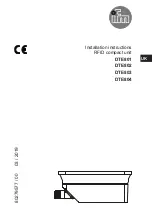
General information about CNC
Version 1.1.2 dated 2019-05-07
Page 249
Translation of the original instructions
macines name
GB
C
NC_g
ener
al_in
fo
rmat
ion_mi
lling_
GB.
fm
OPTIMUM
M A S C H I N E N - G E R M A N Y
®
4.2.5
Rotary axes and secondary axes
NC machines with rotary table or swivel head
Rotary axis: A B C
Positive turn around X, Y, Z (right- hand-rule)
NC machines with several feed axes
Secondary axis: U V W
Parallel to the X-,Y-,Z-axis
4.3
NC mathematics
4.3.1
Basics of the coordinate calculation
For the CNC programming the corresponding points of the outline which is to be machined
need to be entered. In most cases if the drawing is suitable for NC purposes, it is possible to
directly transfer these coordinate points from the drawing. In some cases it may be necessary
to calculate the coordinates.
In the frame of the automation those coordinates are calculated by an NC programming sys-
tem at external working places and the data are directly transferred to the machine. Therefore,
in most cases the NC programming is directly performed on the product (3D pattern) in the con-
struction or in the process engineering department.
For the computer-aided programming the switch and path information are entered over the key-
board in the dialogue using the menu technique.
4.3.2
Parameters of a triangle
In order to calculate the missing coordinates the relations valid for a triangle are very useful.
There are several options to describe a triangle. Some of the following parameters e.g. corners,
angles or sides are being used.
4.3.3
Angle on a triangle
The angles on a triangle determine the type of triangle. Depending on the size of the individual
angles we distinguish between acute-angle, obtuse angle or rectangular triangles.
On triangles the following relation is applied:
the sum of the angles a, b and g in a triangle always amounts to 180°.
a + b + g = 180°
If two angles are known it is possible to determine the third unknown angle by means of this for-
mula.
Rectangular triangle
The rectangular triangle has a special meaning in the analytic geometry as the sides of such a
triangle are having a definite mathematic relation to one another.
On a rectangular triangle the single sides are specially named.
The longest side is located opposite to the right angle and is named hypotenuse.
The two sides of the triangle which are forming the right angle are named cathetus.
The side opposite the angle a is named opposite leg.
The side adjacent to the angle a is named adjacent leg.
















































